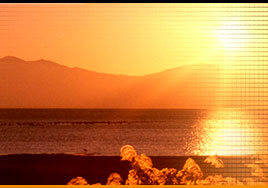| Mission Flag |
|
|
| Flag Code of India |
| On January 26, 2002 the flag code of India was modified after several years of independence. The citizens of India were finally allowed to hoist the Indian flag over their homes, offices & factories on any day & not just National days as was the case earlier. |
| Now Indians can proudly display the Indian national flag any where & any time, as long as the provisions of the Flag Code are strictly followed to avoid any disrespect to the tricolour. |
| For the sake of convenience, Flag Code of India, 2002, has been divided into 3 parts. |
- Part I of the Code contains general description of the National Flag.
- Part II of the Code is devoted to the display of the National Flag of India by members of public, private organizations, educational institutions etc.
- Part III of the Code relates to display of the Indian National Flag by Central & State governments & their organisations & agencies.
|
There are some rules & regulations upon how to fly the flag, based on the 26 January 2002 legislation.
The rules includes the following: |
| The Do’s: |
- The National Flag may be hoisted in educational institutions (schools, colleges, sports camps, scout camps, etc.) to inspire respect for the Flag. An oath of allegiance has been included in the flag hoisting in schools.
- A member of public, a private organization or an educational institution may hoist / display the National Flag on all days and occasions, ceremonial or otherwise consistent with the dignity and honour of the National Flag.
- Section 2 of the new code accepts the right of all private citizens to fly the flag on their premises.
|
| The Don’ts: |
- The flag cannot be used for communal gains, drapery, or clothes. As far as possible, it should be flown from sunrise to sunset, irrespective of the weather.
- The flag cannot be intentionally allowed to touch the ground or the floor or trail in water. It cannot be draped over the hood, top, and sides or back of vehicles, trains, boats or aircraft.
- No other flag or bunting can be placed higher than the flag. Also, no object, including flowers or garlands or emblems can be placed on or above the flag. The tricolour cannot be used as a festoon, rosette or bunting.
|
| The Indian National Flag represents the hopes & aspirations of the Indian people. The Indian National Flag is the symbol of our national pride. Over the last 5 decades, several people including members of armed forces have ungrudgingly laid down their lives to keep the tricolour flying in its full glory. |
Download Flag Code of India - PDF File
|
| Source: National Portal |


